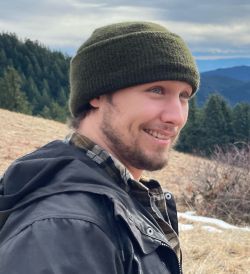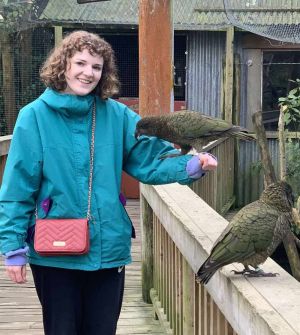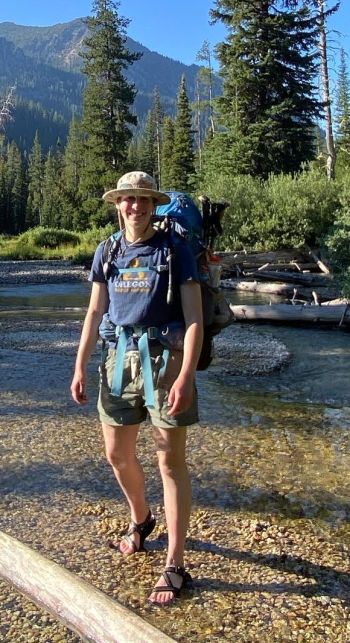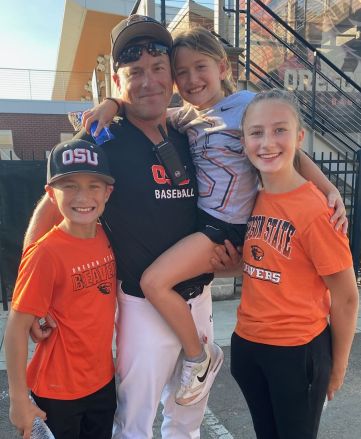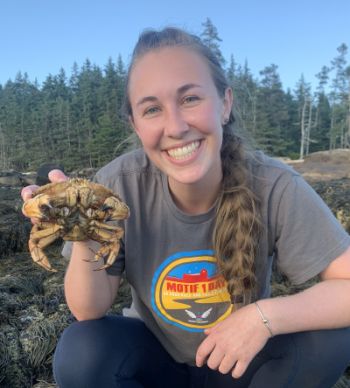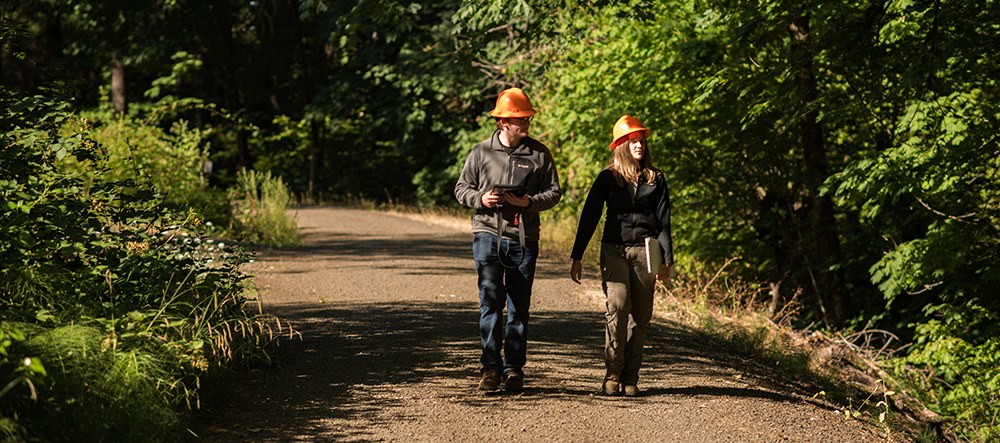
Major & specialization area
Tourism Recreation Adventure Leadership with a concentration in Recreation Management
Why did you choose your degree program/major?
I chose my degree program because I love being outside in nature hiking and learning about ecosystem interactions that make a place so special and worth protecting. My goal is to be able to inspire other people to love parks as much as I do. There is much that goes into planning and maintaining a recreation destination and many variables to consider such as user experience and impacts to the environment that should be carefully monitored. Ultimately, I would like to take this awareness and combine it with an environmental education perspective to become a coordinator for interpretive programs.
What’s the best experience you’ve had as a student?
I have really enjoyed the opportunity to represent the CoF as an Ambassador by leading tours for future students, building community, hosting events, and sharing about the program. My favorite course was TRAL 456, a capstone class that pulled many concepts together in a group setting to create and design an outdoor recreation plan with consideration to public and private lands. This class was taught by my favorite professor and mentor, Ashley D’Antonio. What makes her exceptional is that she is understanding and approachable to students, while being dedicated to student support and growth at OSU. Ashley has a wealth of knowledge that she is willing to share with students concerning recreation ecology and she is well connected within the National Parks system because of her research and hard work that speaks for itself.
Have you participated in any experiential learning opportunities? How has this impacted your student experience?
The experiential learning opportunities I have participated in include an internship at the Middle Fork Willamette Watershed Council where I was able to help create outdoor school curriculum and shadow the Youth Education Coordinator. I have also become more well-rounded through volunteering for local organizations such as Corvallis Parks and Rec to do trail maintenance or the Sustainability Coalition to do wetland restoration work at Bald Peak. Finally, I have been fortunate to be able to participate in the faculty-led trip to Vancouver Island, British Columbia for spring break 2022 where we learned about their forest management practices and how that relates to salmon in comparison to Oregon’s own system. All of these experiences have informed my education decisions and how I approach new opportunities for growth and development.
What are your plans after graduation?
After graduation, I plan to take some time off to be with my 9 month old daughter and co-owning a store with my business partner and friend. Then I plan to resume my studies by enrolling in the Natural Resources graduate program. In the meantime, I am looking forward to a slower pace while keeping up with professional organizations and volunteer opportunities.
What’s one thing (or piece of advice) that you would like incoming OSU students to know?
A piece of advice that I would like incoming OSU students to know is that your life and experience will be much richer if you immerse yourself into what OSU has to offer. This means joining clubs, volunteering for fun events, becoming a part of the Leadership Academy to grow yourself professionally and make new friends, and finally utilizing all your resources on campus to help support you as a student. For me that meant the Family Resource Center and the Food Pantry in the College of Forestry. Lastly, for an unforgettable experience you will not regret, I would highly recommend studying abroad and applying for as many scholarships as possible to help with the funding.
Have you received any scholarships from OSU or the College of Forestry?
I have received two generous scholarships from the College of Forestry. One has enabled me to take advantage of the International Programs opportunity to study abroad in Canada during spring break 2022. The other CoF scholarship has allowed me to attend my classes knowing that my education expenses are covered so that I could fully concentrate on the effort required for my education.
What are your go-to snacks?
My essential go-to snacks for hiking and being outside include trail mix (minus the raisins), peanut butter pretzels, any fresh fruit, cheese, and jerky.
Anything else would you like to share?
The only other thing I would share is that I am extremely grateful for my experiences at OSU that have made me who I am today. Going forward, my goal is to continuously learn while staying humble, and I look forward to giving back to the CoF by helping future students.

